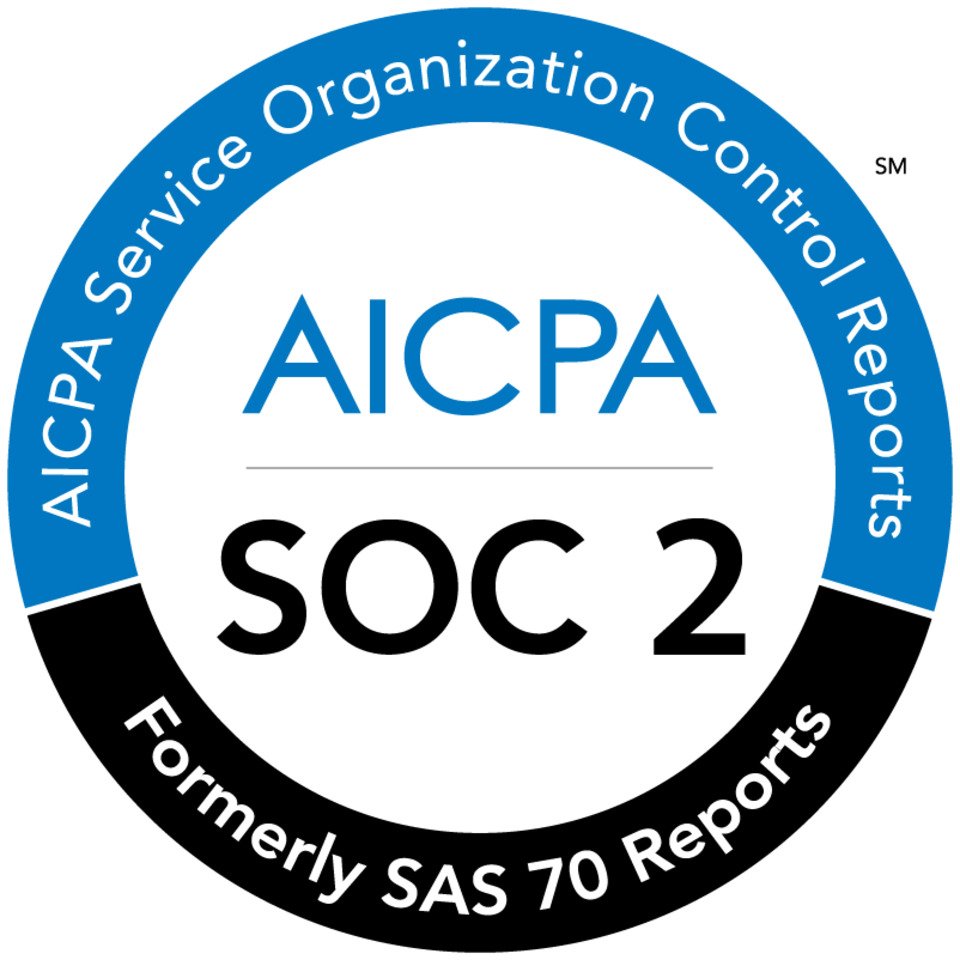Audit & Optimization of Existing AI Systems
We partner with industry leaders



Industries That Benefit
Banking Institutions
Retail and commercial banks face significant challenges with AI models that underperform against expectations or fail to satisfy evolving regulatory requirements across credit, risk, fraud, and customer-facing applications. Digital banks struggle with scaling AI systems that worked in pilot phases but degrade under production volumes and regulatory scrutiny. Private banks require sophisticated AI optimization for wealth management models that often exhibit bias issues or compliance gaps. Investment banks face algorithm performance degradation and unexpected behavior in changing market conditions that impact trading and risk management systems.
Our optimization delivers:
- Performance restoration for critical banking models
- Regulatory compliance for high-scrutiny applications
- Bias remediation for fair lending models
- Enhanced value from significant AI investments
Wealth & Asset Management
Wealth management firms struggle with underperforming portfolio optimization and client recommendation systems that fail to deliver expected personalization and returns. Boutique firms face particular challenges with AI models that work inconsistently across different market conditions and client segments. Family offices need optimization of complex multi-asset allocation models that often exhibit drift and performance degradation over time. Asset management firms require remediation of quantitative models experiencing unexpected behavior during market volatility. Pension funds and mutual funds face regulatory pressure to address bias and fairness issues in investment decision-making algorithms.
Wealth management operations achieve:
- Performance restoration for portfolio and recommendation systems
- Bias remediation for client-facing investment advice
- Regulatory alignment for fiduciary compliance requirements
- Enhanced value from significant quantitative modeling investments
Investment Firms
Private equity and venture capital firms struggle with due diligence and valuation models that underperform in changing market conditions and new investment sectors. Hedge funds face critical challenges with trading algorithms experiencing drift, unexpected losses, or regulatory compliance issues under market stress. Investment organizations need optimization of risk management models that fail to capture emerging risk patterns or exhibit bias in investment selection. Real asset managers require remediation of valuation and performance models that struggle with evolving market conditions. Impact investors face unique challenges with models that fail to accurately measure both financial returns and impact metrics across diverse investment categories.
Investment teams gain:
- Performance restoration for trading algorithms
- Drift correction for changing market conditions
- Documentation satisfying due diligence requirements
- Enhanced governance for regulatory confidence
Fintech Companies
Payment platforms and digital wallets face critical challenges with fraud detection and risk models that underperform against evolving threat patterns and regulatory requirements. Lending startups struggle with credit scoring models that exhibit bias, drift, or fail to scale effectively across diverse customer segments. Robo-advisors need optimization of portfolio management algorithms that underperform expectations or create compliance issues with investment advice regulations. Crypto exchanges require remediation of trading and risk models that fail to handle market volatility effectively. BNPL platforms face challenges with underperforming risk assessment models that create both financial losses and regulatory compliance issues.
Fintech operations achieve:
- Scale adaptation for high-growth environments
- Performance restoration for core algorithms
- Regulatory readiness for increased scrutiny
- Enhanced investor and partner confidence
Capital Markets & Trading
Brokerages struggle with trading algorithms and risk management systems that underperform during market volatility or exhibit unexpected behavior patterns. Market makers face critical challenges with pricing and execution models that fail to maintain competitive positioning or satisfy regulatory requirements. Securities exchanges need optimization of market surveillance and matching algorithms that miss critical patterns or create operational inefficiencies. Prop trading firms require remediation of quantitative models experiencing performance degradation or compliance issues during regulatory examinations. Trading desks face challenges with algorithms that worked in backtesting but fail to deliver expected performance in live trading environments.
Capital markets operations receive:
- Performance restoration for trading and execution algorithms
- Regulatory compliance enhancement for market surveillance systems
- Risk model optimization for volatile market conditions
- Enhanced competitive positioning through improved algorithmic performance
Insurance & Risk Providers
Insurance companies face challenges with underperforming underwriting, pricing, and claims models that often exhibit bias issues or fail to satisfy evolving state regulatory requirements. General insurers struggle with risk assessment models that fail to accurately price policies or predict claims across diverse customer segments. Life and health insurers require optimization of actuarial models that underperform in changing demographic and health patterns. Reinsurers face challenges with catastrophe modeling and risk assessment systems that fail during extreme events or regulatory examinations. Digital insurers need remediation of automated underwriting systems that create customer experience issues or regulatory compliance problems.
Insurance organizations benefit from:
- Performance improvement for rating and underwriting models
- Bias remediation for consumer-facing applications
- Regulatory alignment for state compliance requirements
- Enhanced business value from significant AI investments
Crowdfunding & Alternative Finance
Crowdfunding platforms struggle with investor matching and risk assessment models that underperform expectations or create regulatory compliance issues across diverse investment offerings. Real estate investment platforms face challenges with property valuation and risk models that fail to accurately assess opportunities or satisfy investor due diligence requirements. Startup financing platforms need optimization of deal evaluation and risk assessment systems that exhibit bias or fail to scale effectively. Alternative finance providers require remediation of credit scoring and risk models that underperform across diverse lending products and customer segments. These platforms face emerging regulatory scrutiny requiring optimization of existing AI systems for compliance and governance standards.
Alternative finance operations achieve:
- Performance restoration for core risk assessment and matching algorithms
- Regulatory compliance enhancement for investor protection requirements
- Bias remediation for fair lending and investment opportunity access
- Enhanced platform credibility through improved AI system performance
Corporate Finance & Treasury Divisions
Corporate finance teams struggle with financial planning and forecasting models that underperform during economic volatility or fail to provide accurate strategic guidance. Treasury departments face challenges with cash flow forecasting and risk management systems that exhibit drift or fail to adapt to changing business conditions. Internal finance teams require optimization of budgeting and performance management models that create inaccurate projections or compliance issues. Strategy and risk offices need remediation of decision support systems that fail to provide reliable insights for major business decisions. These divisions face increasing pressure to demonstrate AI system effectiveness and regulatory compliance across their analytical tools.
Finance departments receive:
- Performance restoration for financial planning and forecasting models
- Enhanced accuracy for cash flow and risk management systems
- Regulatory compliance improvement for financial reporting AI applications
- Optimization of decision support systems for strategic business guidance
Problems or Missed Opportunities We Solve
Disappointing AI Performance
Financial institutions frequently experience 30-50% lower performance from AI systems than initially projected, creating significant business disappointment and wasted investment. These performance gaps result from specific technical and implementation issues that traditional approaches fail to resolve.
Our approach:
- Identifies precise causes of underperformance
- Implements targeted fixes rather than complete rebuilds
- Restores performance to expected levels
- Creates sustainable improvements rather than temporary fixes
Regulatory Compliance Gaps
Existing AI systems often fail to satisfy evolving regulatory expectations for governance, documentation, explainability, and fairness. These compliance gaps create significant regulatory exposure during examinations and reviews.
The solution provides:
- Comprehensive compliance assessment against financial regulations
- Targeted remediation addressing specific requirements
- Documentation satisfying examiner expectations
- Sustainable compliance frameworks going forward
Model Bias and Fairness Issues
Financial models frequently exhibit unintended bias across demographic groups, creating both regulatory risks and ethical concerns. Traditional correction approaches often sacrifice performance while inadequately addressing underlying bias issues.
Our remediation delivers:
- Sophisticated bias detection across protected classes
- Remediation preserving model performance
- Documentation of fairness improvements
- Implementation of ongoing fairness monitoring
Unexplained Performance Degradation
AI systems commonly experience performance decay over time from data drift, changing conditions, or implementation issues. These degradation patterns frustrate business users while creating compliance and operational risks.
The solution provides:
- Precise identification of drift causes
- Targeted remediation addressing root issues
- Implementation of drift detection controls
- Ongoing monitoring preventing future degradation
Incomplete Governance Documentation
Many financial AI implementations lack the comprehensive documentation required by regulators and governance committees. These documentation gaps create significant risks during examinations while limiting effective oversight.
Organizations gain:
- Complete model documentation meeting regulatory standards
- Implementation of appropriate governance controls
- Evidence of testing and validation appropriate to model risk
- Frameworks for ongoing monitoring and reporting
Case Study
Real Results from Financial Leaders
KYC Automation for a German Payments Fintech
A mid-sized German payment gateway with 180 employees processing approximately €700-800M in annual transactions, active in 6 EU markets.
- 28% conversion increased
- 40% improved performance
Conversational AI for a Spanish Insurance Firm
A traditional Spanish insurance provider with 85 years of history, 950 employees, and €280 million in annual premiums across home, auto, life, and commercial lines.
- 28% conversion increased
- 40% improved performance
Real-Time Fraud Detection in UK Digital Payments App
A fast-growing UK-based mobile payment application with 165 employees processing approximately £1.3 billion in annual transaction volume with around 700k active users.
- 28% conversion increased
- 40% improved performance
AI Copilot for Treasury Operations at a Spanish Payment Orchestration Platform
A mid-sized German payment gateway with 180 employees processing approximately €700-800M in annual transactions, active in 6 EU markets.
- 28% conversion increased
- 40% improved performance
Certifications & Compliance



Benefits of Using the Solution

Recovered AI Investment
Transform underperforming AI assets into valuable, functioning tools that deliver their intended business benefits. Financial institutions typically achieve 85-95% performance restoration without the cost and time of complete rebuilds, recovering millions in AI investment.

Enhanced Regulatory Confidence
Address compliance gaps in existing AI systems before examination findings occur. Organizations establish comprehensive documentation and governance satisfying regulatory expectations, significantly reducing the risk of findings, restrictions, or remediation requirements.

Improved Model Governance
Implement appropriate controls, monitoring, and oversight for existing AI systems. Financial institutions establish sustainable governance that satisfies both regulatory requirements and internal risk management standards.

Performance Longevity
Establish monitoring and maintenance processes that maintain AI performance over time despite changing conditions. Organizations achieve sustainable value from AI systems through early detection and remediation of emerging performance issues.

Accelerated AI Maturity
Develop internal capabilities for effective AI implementation and governance through collaborative optimization work. Financial institutions accelerate their AI maturity curve through practical knowledge transfer during the remediation process.
Process Flow

Comprehensive Model Assessment
The engagement begins with thorough evaluation of model architecture, data quality, implementation, governance, and performance metrics. This assessment identifies specific performance issues, compliance gaps, and remediation priorities based on business impact.
Remediation Planning & Prioritization
Technical and compliance specialists develop a detailed remediation roadmap addressing identified issues in priority order. This planning phase establishes clear objectives, methodologies, and success criteria for the optimization work.
Technical Implementation
Data scientists and model specialists implement required changes to model architecture, training data, implementation, and monitoring processes. This technical work directly addresses identified performance and compliance issues.
Documentation & Governance Enhancement
Governance specialists develop comprehensive documentation satisfying regulatory requirements and internal governance standards. This documentation provides evidence of optimization work while establishing appropriate ongoing controls.
Validation & Performance Verification
Rigorous testing confirms performance improvements, compliance enhancements, and sustained model stability. This validation ensures the remediation achieves its objectives before returning the model to full operation.
Knowledge Transfer & Sustainability
Why Aspagnul Is the Ideal Partner
Financial AI Specialization
The Aspagnul team combines deep expertise in financial applications of AI with specialized knowledge of model failure patterns unique to banking, investment, insurance, and risk systems. This focused expertise enables diagnosis and remediation of financial AI issues that general data science teams often miss.
Our specialists have remediated underperforming AI systems across all major financial sectors, developing proprietary methodologies specifically designed for the complex failure patterns common in financial applications.
Regulatory Compliance Focus
Our approach incorporates comprehensive knowledge of regulatory expectations for financial AI, including model risk management guidance, fair lending requirements, and governance standards across major financial jurisdictions. This regulatory expertise ensures remediation that satisfies examiner expectations rather than just technical improvements.
The team includes former financial regulators, model risk specialists, and compliance experts who understand both technical model components and the governance frameworks required for financial applications.
Diagnostic Excellence
Our assessment methodology incorporates sophisticated diagnostic techniques specifically designed for financial AI issues, identifying root causes rather than symptoms. This diagnostic precision enables targeted remediation rather than the costly, time-consuming rebuilds often recommended by general consultancies.
The team utilizes proprietary assessment tools developed through hundreds of financial AI remediation projects, enabling faster and more accurate diagnosis than conventional approaches.
Practical Implementation Experience
Our optimization specialists bring practical experience implementing AI in production financial environments, understanding the operational constraints and implementation challenges that academic data scientists often miss. This pragmatic perspective ensures remediation approaches that work in real-world financial operations.
The team has successfully implemented AI systems processing billions in financial transactions across diverse regulatory environments, providing guidance based on actual production experience rather than theoretical knowledge.
Cross-Functional Expertise
Our remediation teams integrate expertise across model development, data science, regulatory compliance, and financial operations to provide truly comprehensive optimization. This multidisciplinary approach addresses all dimensions of AI performance rather than focusing narrowly on algorithmic elements.
This integrated perspective enables solutions that address technical, operational, and governance issues simultaneously—avoiding the common pitfall of technical fixes that fail to address underlying implementation and governance issues.
Frequently Asked Questions
Financial AI systems fail for reasons fundamentally different from general machine learning applications, requiring specialized diagnostic approaches. Our assessment methodology systematically evaluates five critical dimensions often overlooked by conventional reviews: data quality degradation specific to financial processes, model architecture alignment with financial problem structures, implementation constraints in regulated environments, governance gaps creating operational limitations, and monitoring effectiveness for financial patterns.
The diagnostic process combines quantitative performance metrics, code review, data assessment, implementation analysis, and governance evaluation to identify precise causes rather than symptoms. This comprehensive approach typically identifies specific remediation opportunities that recover 85-95% of expected performance without complete rebuilds. Financial institutions gain clear understanding of exactly why systems underperform and what specific actions will restore value, rather than vague recommendations requiring substantial reinvestment.
Conventional approaches to bias remediation often create unacceptable performance degradation, forcing financial institutions to choose between fairness and effectiveness. Our methodology implements a more sophisticated approach: multi-dimensional fairness assessment identifying specific bias mechanisms rather than just outcome disparities, targeted interventions addressing underlying causes rather than symptoms, balanced remediation preserving legitimate risk signals while removing discriminatory patterns, and comprehensive documentation establishing regulatory defensibility.
This balanced approach typically achieves 30-50% reduction in demographic disparities while maintaining or improving overall model performance—eliminating the common fairness-performance tradeoff. Financial institutions receive both the fairness improvements needed for regulatory compliance and the performance characteristics required for business effectiveness. The solution includes comprehensive documentation specifically designed to satisfy fair lending examinations and regulatory reviews.
Financial AI systems frequently face four categories of regulatory compliance gaps: insufficient model documentation failing to satisfy SR 11-7 and similar requirements, inadequate explainability for consumer-facing and credit decisions, incomplete fairness testing across protected classes, and governance deficiencies around validation and ongoing monitoring. These gaps create significant regulatory exposure during examinations and reviews.
Our remediation methodology directly addresses these compliance dimensions through targeted enhancements: comprehensive model documentation meeting regulatory standards, appropriate explainability implementations based on use case risk, thorough fairness testing with documented remediation, and governance framework implementation satisfying examiner expectations. Financial institutions receive complete compliance packages specifically designed for their regulatory context and model use cases, substantially reducing examination findings and restrictions.
Model drift represents one of the most common yet frequently misdiagnosed issues in financial AI, requiring sophisticated detection and targeted remediation. Our approach differentiates between four distinct drift patterns often confused in conventional analysis: data drift affecting input distributions, concept drift changing underlying relationships, operational drift from implementation changes, and population drift affecting applicability to current segments.
This precise diagnosis enables targeted remediation rather than unnecessary complete retraining: data drift typically requires recalibration or partial retraining rather than full rebuilds; concept drift necessitates feature engineering and selective retraining; operational drift requires implementation adjustments rather than model changes; population drift needs segmentation refinement and targeted enhancement. Financial institutions receive precisely targeted remediation that addresses actual drift patterns rather than generic retraining recommendations, delivering faster and more sustainable performance restoration.
Our implementation approach minimizes demands on your resources while ensuring effective knowledge transfer for long-term sustainability. The typical optimization process requires limited involvement from your team—usually 3-5 hours weekly from model owners and 2-3 hours weekly from IT stakeholders during the active remediation phase.
The collaborative methodology provides appropriate knowledge transfer to your internal teams without creating significant additional work. Technical specialists gain practical understanding of remediation approaches while governance teams receive comprehensive documentation of changes and ongoing requirements. Most financial institutions complete full optimization within 8-12 weeks with minimal disruption to ongoing operations, achieving substantial performance and compliance improvements while developing internal capabilities for long-term AI success.
Financial institutions typically experience improvements in three primary dimensions: performance metrics (30-50% improvement in model accuracy, precision, or business KPIs), compliance positioning (85-95% reduction in potential regulatory findings), and operational stability (65-75% decrease in model incidents and unexpected behaviors). These improvements begin appearing within 4-6 weeks of engagement start, with full implementation typically completed within 8-12 weeks.
The specific improvements depend on your current model state, application type, and business objectives. Remediation priorities are established based on business impact, with performance enhancements and critical compliance gaps addressed first. Most financial institutions achieve full ROI within the first quarter following optimization through combined benefits of improved business outcomes, reduced operational issues, and avoided regulatory findings. We establish baseline measurements during initial assessment and track improvements against these metrics to provide clear value documentation.
Let’s get in touch
We’re excited to hear from you and to start something special together.
- Money-back guarantee if you don’t receive what we promise.
- Full financial and technical analysis of your current situation.
- Full support from the moment of our first contact.
Quick contact

Turn your financial operations with purpose-built AI solutions that reduce costs, accelerate growth, and ensure regulatory compliance across financial institutions.
